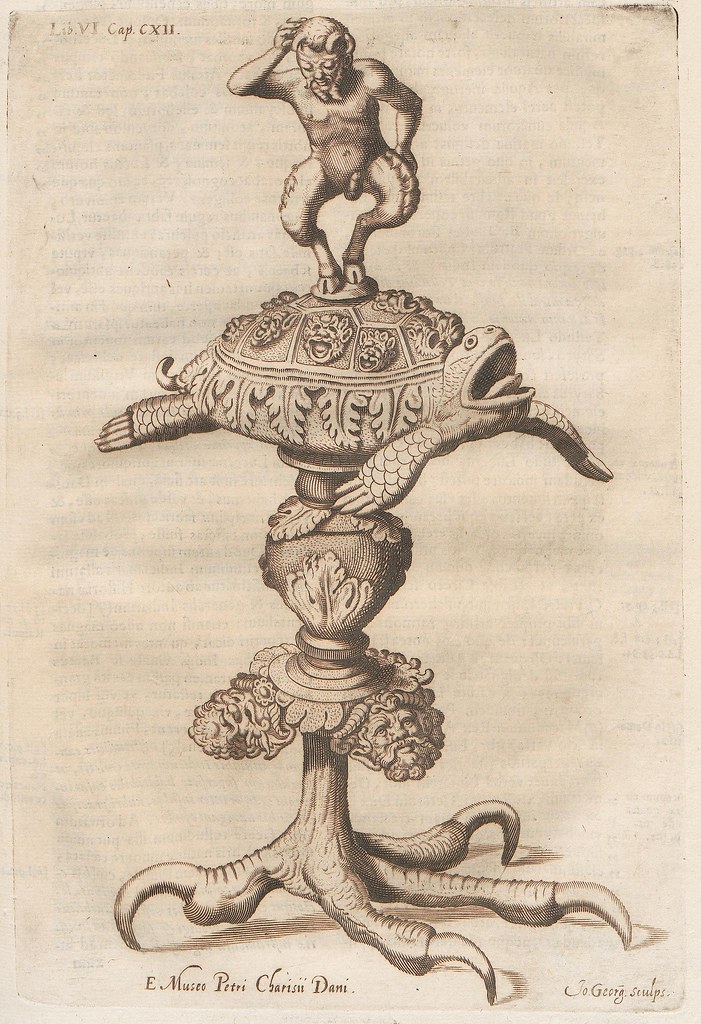
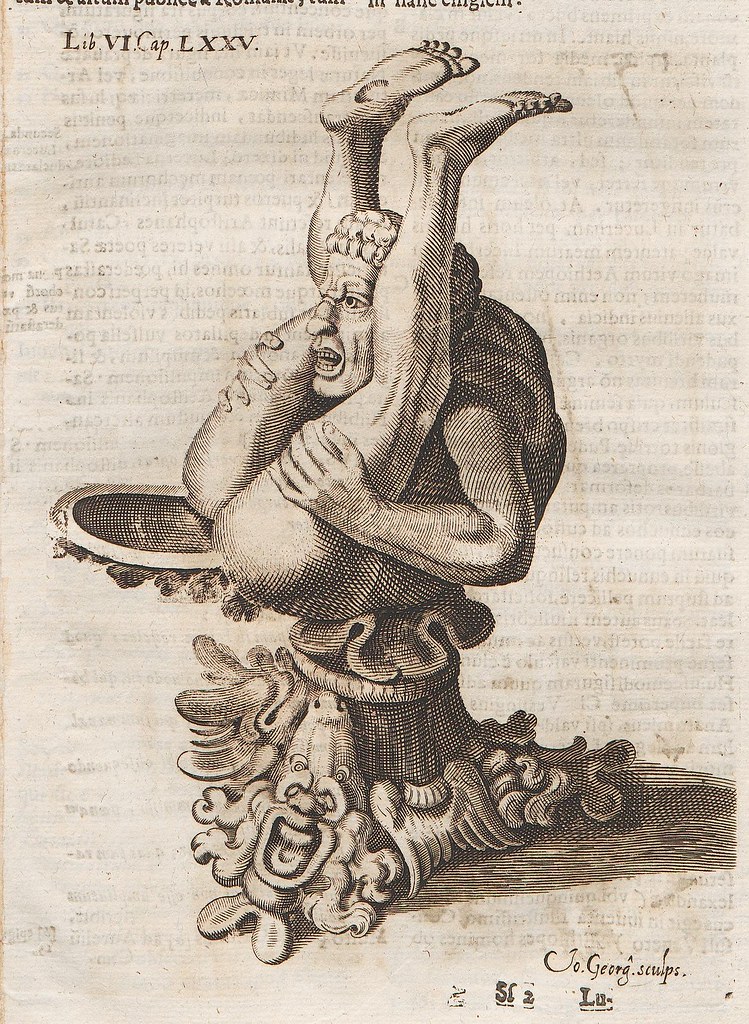
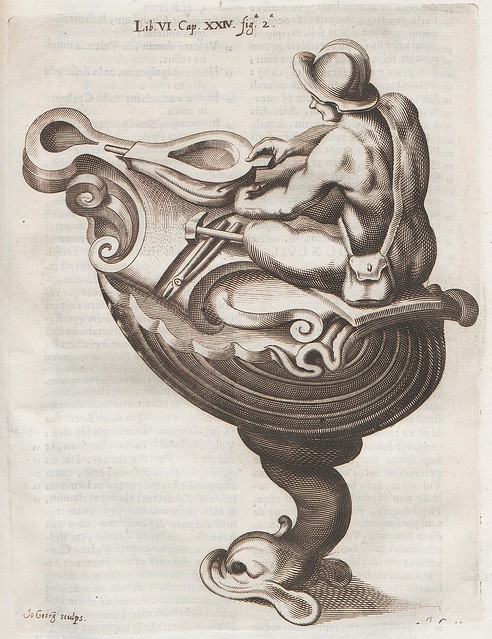
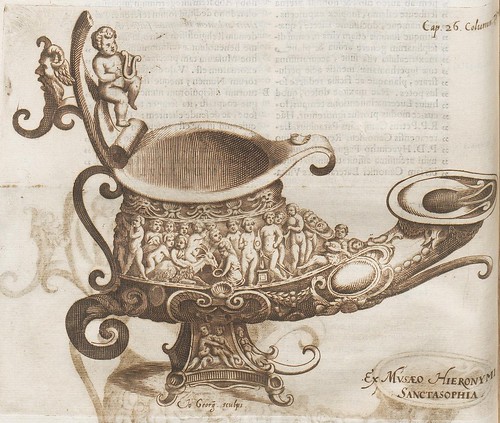
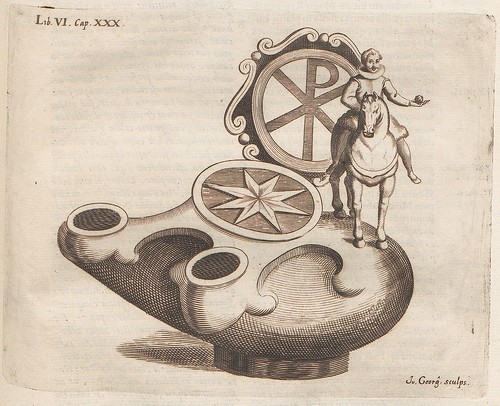
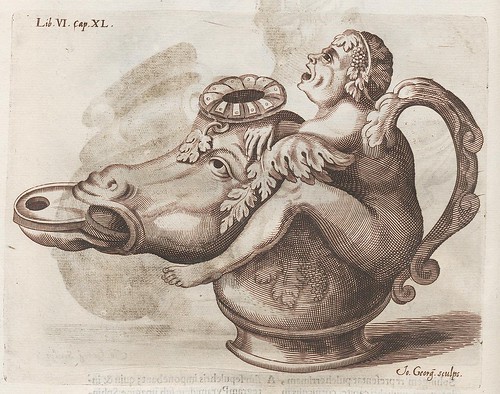
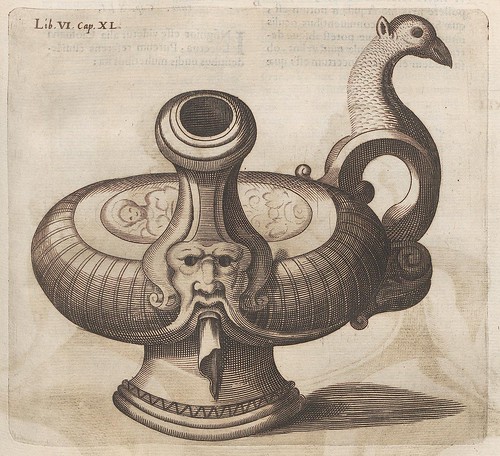
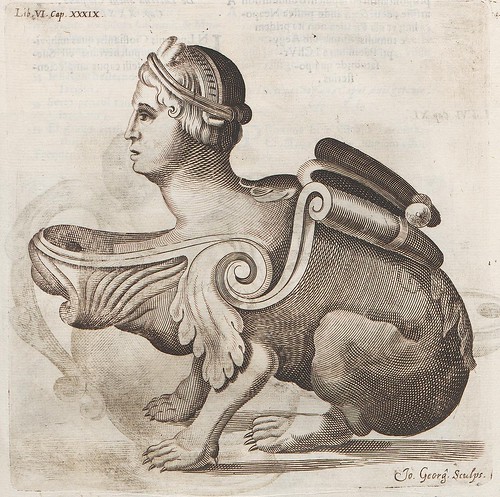
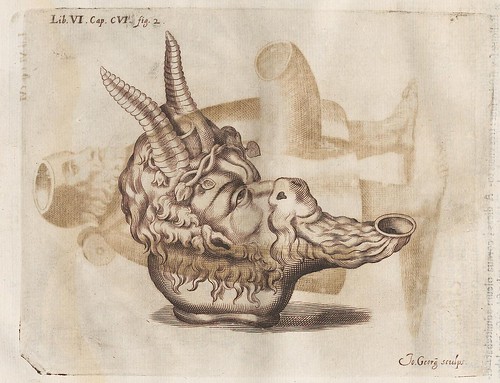
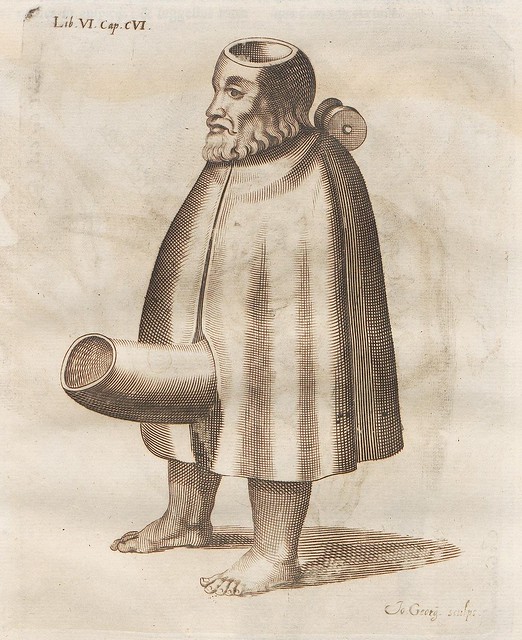
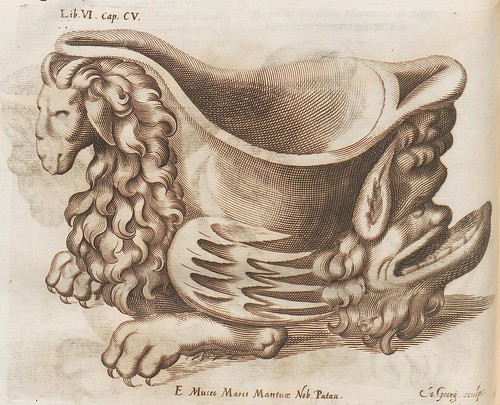
'De Lucernis Antiquorum Reconditis Libb. Sex: In Quibus Earum Recens Inventarum adhuc ardentium observationes multæ primum afferuntur: Aliorum opiniones omnes de ipsarum attributis dein expenduntur: Earum causæ, proprietates, differenti, æque singulæ deinceps ex rei natura deteguntur: Pluresque dubitationes e traditiis emergentes demum eluuniur. Explicatis diligenter abditissimis Quæstionibus De Ignium causis, origine, vaietate, duratione, motu, & extinctu: De Antiperistasi, Fumo, Cinere, Lentore, Mistis incombustibilibus, Brutorum Funeribus, & aliis Naturæ Arcanis. Declaratisque plurimis Antiquitatis ritibus Lychnos supra centum effigiantibus: Cum Indicibus locupletissimis. Autore Fortunio Liceto Genuense Ex L. Com. Phil. Medico in Academia Patau. Theorico supremo' 1653, was recently uploaded by the University of Heidelberg (click anything below 'Inhalt' and then 'Vorschau' for thumbnail page images) {see}
My Latin being next to non-existent (except when I pretend it isn't), I'm only vaguely of the belief that the Liceti designs of Greek and Roman houseware items, from the antiquities, come from actual objects. They may well have been sketched after paintings or chiselled designs found in ruins. Such is the depth of my comprehension at this late hour. And pay little notice to the image titles on mouseover: it's mostly snipped text from the same page, rather than being pertinent.
None of that, of course, diminishes one's capacity to marvel at the twisted imaginations of the designers bringing delightful satyrs and grotesques to the domestic table.
The author, Fortunio Liceti (1577–1657) is best known for his works on malformed embryos, particuarly 'De Monstruorum Natura', which has never really been my thing.
nice one! you just don't find much these days that compares to the creative obscene humor of antiquity. Reminds me of the Chimu pottery vessels from Peru.
ReplyDeleteThese illustrations are HILARIOUS! I can't get over the guy holding his legs up!!! xxoo
ReplyDeleteI can't believe that second illustration would make a very appetizing piece of tableware.
ReplyDeleteMaybe they serve a drink to unwanted guests with that device? Some truly bizarre thought went into many of these.
ReplyDeleteWill C writes:
ReplyDelete"All of the objects illustrated -- and I can't wait to send the link to your post around to about 30 friends under the subject heading "What better way to say Merry Christmas?" -- are antique bronze oil lamps, the history of which appears to be the subject of Liceti's text. So, their context is probably more like the rich Roman scholar's desk and bed chamber than the dining table, but I wasn't there.
I had a browse in the Heidelberg site's thumbnails, and he illustrated a few red clay oil lamps as well, including early Christian examples. These glorious bronze bits look more like Greco-Roman, of the fantastic types that were being made in the run-up to Pompeii."
Fabulous. As the patent must have expired by now I can see a novelty hand dryer in imminent production for the man who (thinks he) has everything.
ReplyDelete